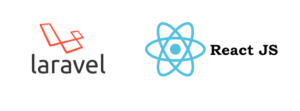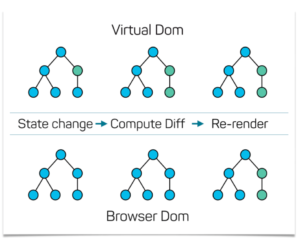React JS and Laravel: a coherent and demanding opportunity
In the development trend of languages and functionalities for the construction, maintenance and updating of apps and web applications, the organization, the dynamism not only of data but also of components as well as the speed of execution, are elements to keep in strong consideration. In particular, in medium or high complexity scenarios they become fundamental.

In this context we have come to the choice of a development framework like Laravel using frontend libraries of the React JavaScript type.
We therefore illustrate some aspects of this front-end library, as we consider it extremely interesting to deal with.Created by Facebook and chosen for the Web interface of Instagram, React is a JavaScript library that allows you to build dynamic user interfaces for interaction with the user and in data management, maintaining modulability in development so as to make processes more fluid, maintenance and updating of the UI.
The difference with the other front-end libraries in the MVC paradigm is that even if you can consider React as the view, in reality here do not exist the concepts of controller, directive, template, listener of global events, etc., as it tends to group all the code according to the scope of use rather than separating the code according to its function (presentation, logic, data, etc) avoiding the use of two-way data binding – bidirectional data flow – and updating in waterfall of the DOM tree. It introduces the concept of “Virtual DOM” for a noticeably better performance of the application.

This is how applications are written in terms of components. If a component is too complex, it will be separated into simpler and reusable components.
The component thus corresponds to a custom element of the DOM, responsible for rendering and managing the events, defining the DOM to be generated to represent it on the page and its behavior to the interaction with the user or to the status change of the application.
The components are therefore combined.
Main points of insterest are:
● Easy integration
Being a library and not a web development framework, it is also possible to integrate projects for the development of targeted parts. Its use is also independent of the technological stack of the project.● Libraries and growing communities
It offers integrative modules for the management of routing, application status, testing and a high number of libraries including prestigious companies such as AirBnB, Netflix, Paypal, Uber, Reddit, Asana, etc.● Virtual DOM
It is a memory abstraction of the UI components. It offers efficient management of changes in the DOM thanks to the selective rendering of sub-trees of the DOM at each change of state. For this purpose it uses an algorithm that allows it to identify only the parts that are subject to this change.● JSX
It is an optional markup similar to HTML. It allows the declarative description of the interface by combining the ease of writing views with the power of JavaScript. This syntax is intended for use by transpitters to transform JSX markup into standard JavaScript objects.
Instead of writing JavaScript in HTML, JSX allows you to insert HTML in JavaScript.● Unidirectional data flow (one-way data binding)
It avoids the complexity of the two-way data binding by defining a flow of mono directional data (parent-child) and a precise hierarchy of communication.● Sharing the code between client and server
Unlike other client-side libraries, React is an isomorphic library. This property allows the pages to be rendered also on the server side, thus sending the HTML to the browser, which represents the initial state of the application, for a versatile and at the same time SEO friendly result.● React Native
With React Native you can create native apps for Android and IOS systems.
